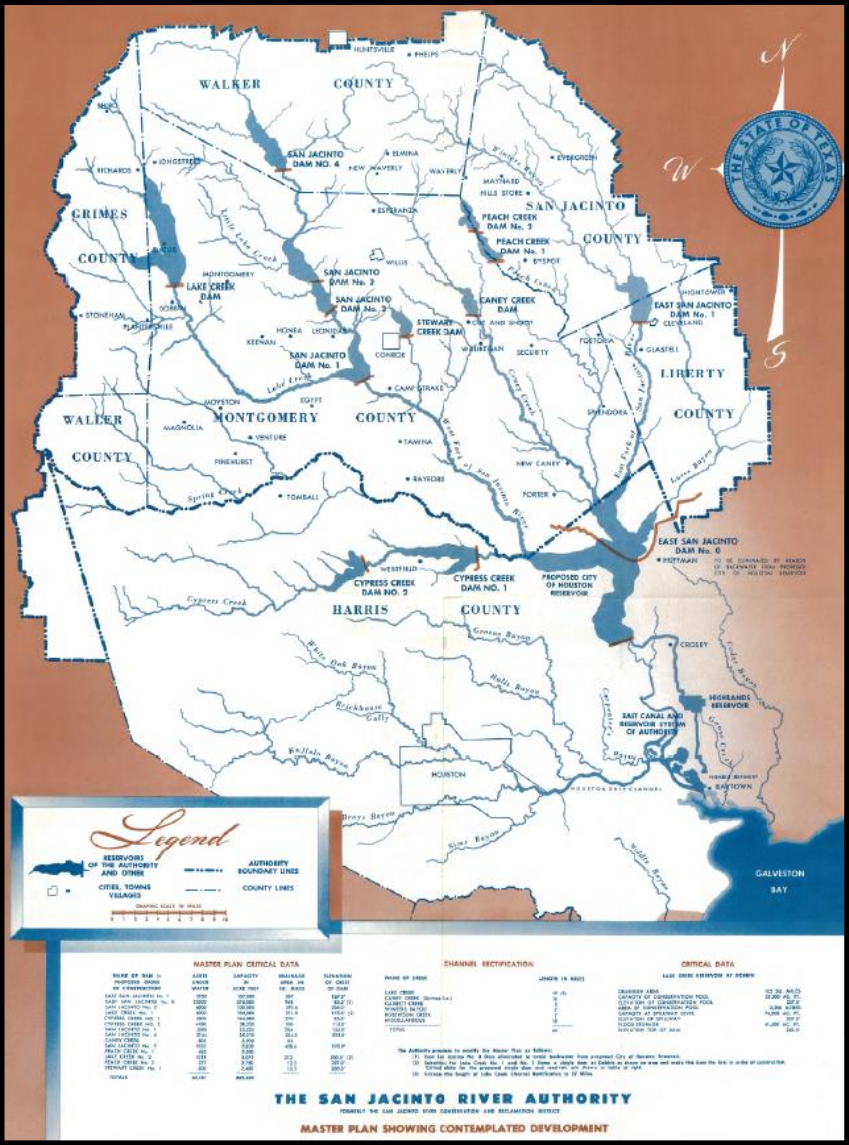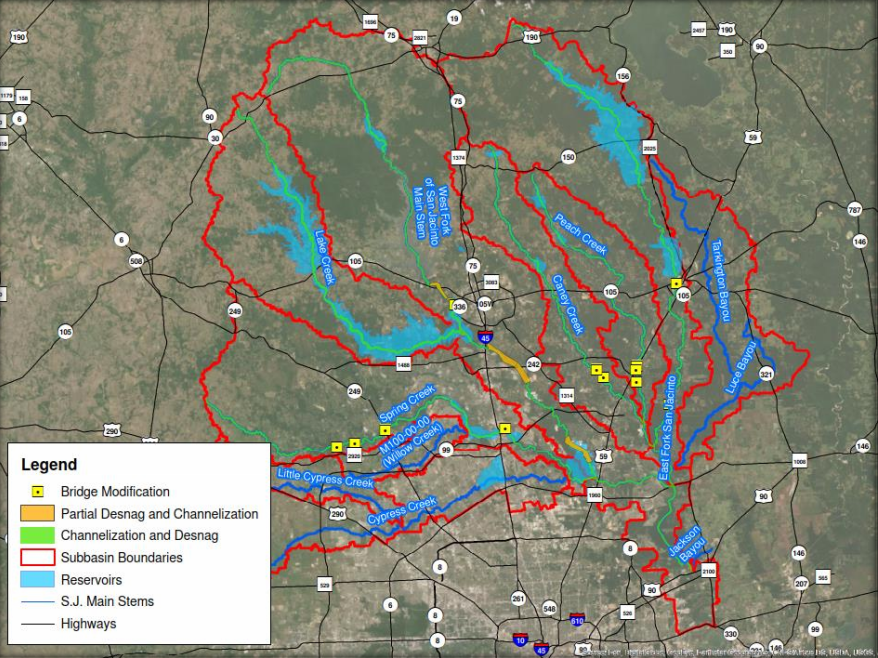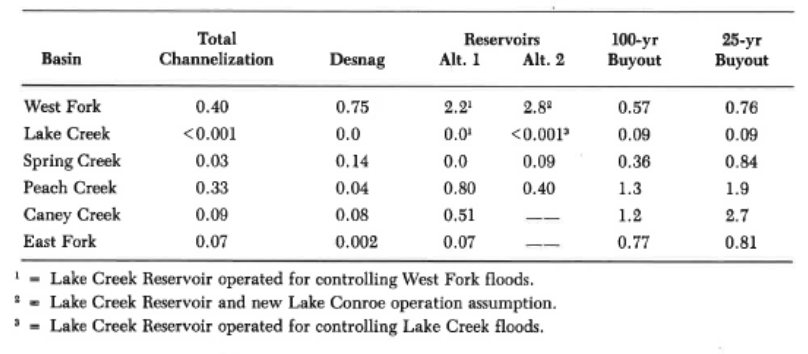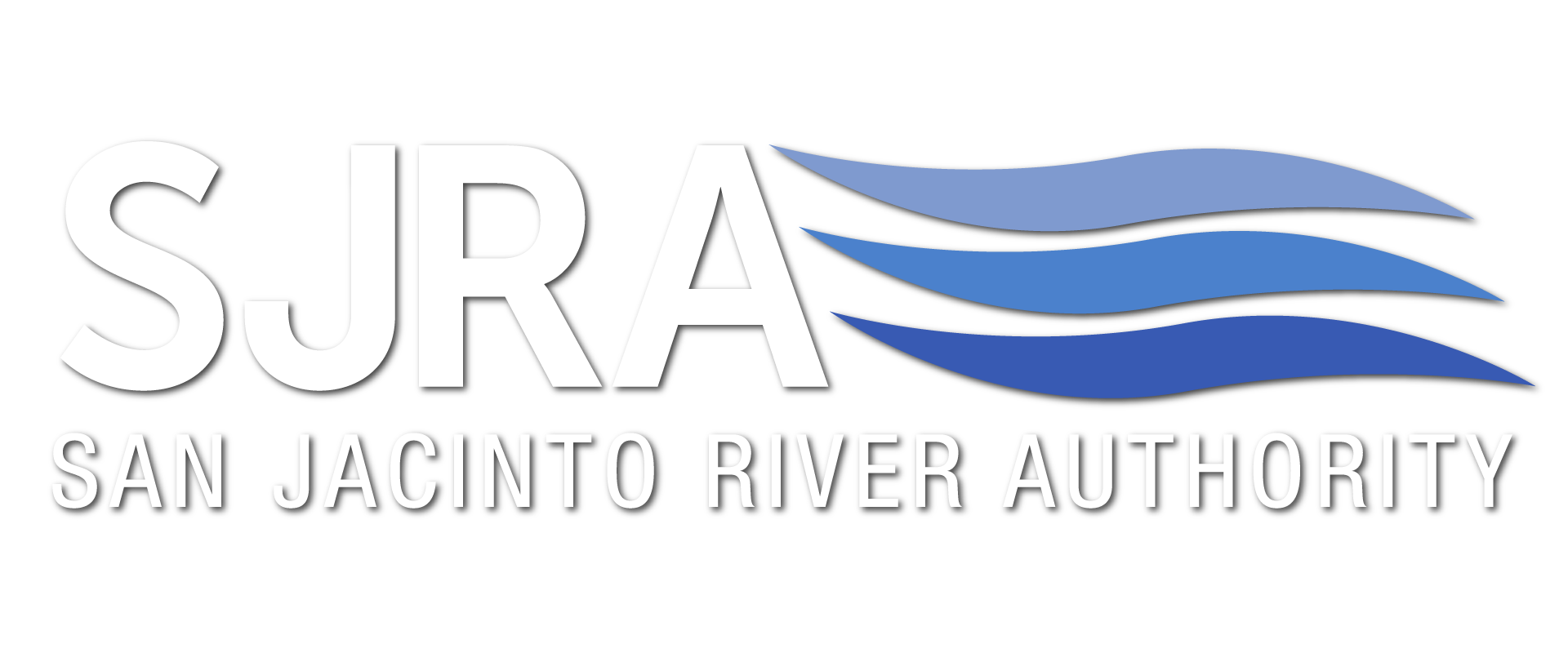In Part One of “Who Oversees Flood Control for Montgomery County?” we noted that unfortunately there’s not a single entity that is in charge of flood planning and flood management for all of Montgomery County. Just as significant—there’s no dedicated funding to pay for regional projects that benefit the county as a whole.
We also discussed how, throughout its existence, in addition to providing water supply and other similar services, the San Jacinto River Authority (SJRA) has engaged in planning efforts related to flooding in its home base of Montgomery County. However, county-wide flood mitigation plans have not been realized for a number of reasons including a lack of a dedicated funding source and no broad consensus to implement county-wide flood mitigation plans. Part Two of our blog series looks at some of the early historical flood planning efforts of SJRA.
Assessing Risk Since the 1940s
Beginning at its creation in 1937 and continuing through more than eight decades of dedicated and professional leadership, SJRA has quietly, but diligently, pursued its goals of long term water planning and providing water-related services.

Figure 1 – Proposed Alternatives Graphic from 1957 San Jacinto River Master Plan Report
Beginning in 1943, in response to flood damage to property and agricultural lands in the San Jacinto River watershed, several historical drainage studies were performed. These studies analyzed existing conditions, identified flood risks, and evaluated mitigation alternatives in order to reduce flood risk, manage water supply in the region, and determine sedimentation impacts.
The initial 1943 San Jacinto River master plan report called attention to the need for comprehensive flood risk assessment within the service area. The ultimate goal of the master plan was the conservation, reclamation, and utilization of the natural resources of the entire watershed while accounting for sustainable growth and development within the area. A prime objective of the plan was to address flooding issues, resulting in several projects being considered to reduce the area’s flood risk: the creation of dams and reservoirs, channel improvements, and levee construction. A total of 14 dams with approximately 886,000 acre-feet of storage for water supply and flood mitigation were considered in the Plan. The estimated cost of these projects at the time was approximately $22.2 million for dam/reservoir construction and $1 million for channel improvements.
In the 1957 San Jacinto River master plan report update, the Authority again discussed the importance of flood risk reduction measures as well as the implementation of drainage improvements to reduce inundation and destructive run-off, and minimize future loss of land productivity. Similar alternatives to those outlined in the 1943 master plan were discussed, and a detailed list of alternatives and estimated costs was again provided.
A San Jacinto Upper Watershed Drainage Improvement and Flood Control Planning Study developed in 1985 was the first study that focused on detailed evaluation of proposed alternatives and incorporated hydraulic modeling to evaluate their feasibility and flood risk reduction effectiveness. Several alternatives, both structural and non-structural, were considered and evaluated, including:
- Total channelization
- Selective channelization
- Vegetation clearing
- Bridge modifications
- Property buyouts
- Lake/reservoir creation
The report concluded that total channelization, bridge modification, and most vegetation clearing appeared to be less feasible based on benefit/cost ratios, and that property buyouts and reservoir construction appeared to be most cost effective.

Figure 2-Alternatives from 1985 Planning Study

Figure 3-Benefit Cost Ratios for Alternatives 1985 Study
In 1989, a Comprehensive Flood Protection Plan for Southern Montgomery County, Texas was created. This plan determined existing flood problems, proposed flood reduction alternatives, and recommended improvements for a small portion of south Montgomery County. The analyzed and recommended alternatives addressed localized flooding as opposed to regional issues.
SJRA, in cooperation with the Bureau of Reclamation, studied the possibility of building a reservoir on the lower portion of Lake Creek and developed a report in 1997. The proposed reservoir would have been roughly 80% of the size of Lake Conroe. The reservoir was proposed to increase surface water supply (approximate yield of 60% of Lake Conroe water supply), with no floodplain mitigation. Plans for the reservoir were not further pursued due to a lack of federal and state funding and minimal interest in water sales from the proposed reservoir.
So, who oversees flood control for Montgomery County? Dedicated funding and a dedicated governing body, such as a flood control district, could have made mitigation projects easier to devise, implement, and monitor. It could have also improved oversight and provided a coordinated effort to improve the entire county. A number of studies and plans were prepared over the years, but they were not implemented due to lack of funding. Voters had the chance to change that when the creation of a Montgomery County Flood Control District was presented to them in the 1980s.
In our next blog post we will look at the attempts by a local legislator and the SJRA to establish a Montgomery County Flood Control District to address flood planning. These efforts ultimately failed when the Montgomery County voters defeated the establishment of the district and its recommended funding mechanism. Check back for additional posts.

